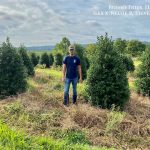
Growing trees is a well-known science that has been studied by various cultures for millennia. Universities and institutions spend millions of dollars in research and education on this pursuit each year. However, in conjunction with this science, art is also involved. Growing trees is a collaborative form of both science and art in which horticultural moves are made based upon the desired aesthetic, which in return provokes a reaction by the tree. This reaction may lead to balance, symmetry and vigor, but it may also lead to unexpected and unwanted consequences. The grower must be observant and listen to the tree’s needs and keep them in balance with his or her own. It is at this point of convergence, where the needs of self and business can only be satisfied by listening to and heeding the needs of the tree, that the ‘scientific’ art of growing begins.
There are many who appreciate the beauty of trees, plants and landscapes. The Landscape Architect is rightfully celebrated as an artist, but the professional, hands-on plant manager is typically not thought of in terms of artistry. However, the individual who shapes and nurtures the tree is practicing one of the world’s oldest art forms. Over time this daily interaction between plant and person becomes second nature and wisdom is born. It is the type of wisdom that finds its origins in the classroom, but can only be realized with practice, on the ground and near the dirt.
Conformity is a part of life and most artists study those that came before and adhere to accepted standards. However, conformity can be a limiting factor, for significant breakthroughs typically occur when boundaries are expanded. Ideas and concepts born on the pillow and deployed in the landscape, nursery, or garden, may forever change the art of growing.
Much like a painter who spends decades working upon a single canvas, growing trees is a long-term passion. A tree planted today in fifty years will have been through unimaginable change, enduring many hardships, always reacting to and interacting with the environment around it. Along the way the tree will have taken paths unforeseen and it would be impossible to predict exactly how it will look then. However, every pruning cut made when the tree was young will have induced a reaction and this will still be evident if you look close enough. The vision of the grower will have blended with the vision of the tree and become one.

